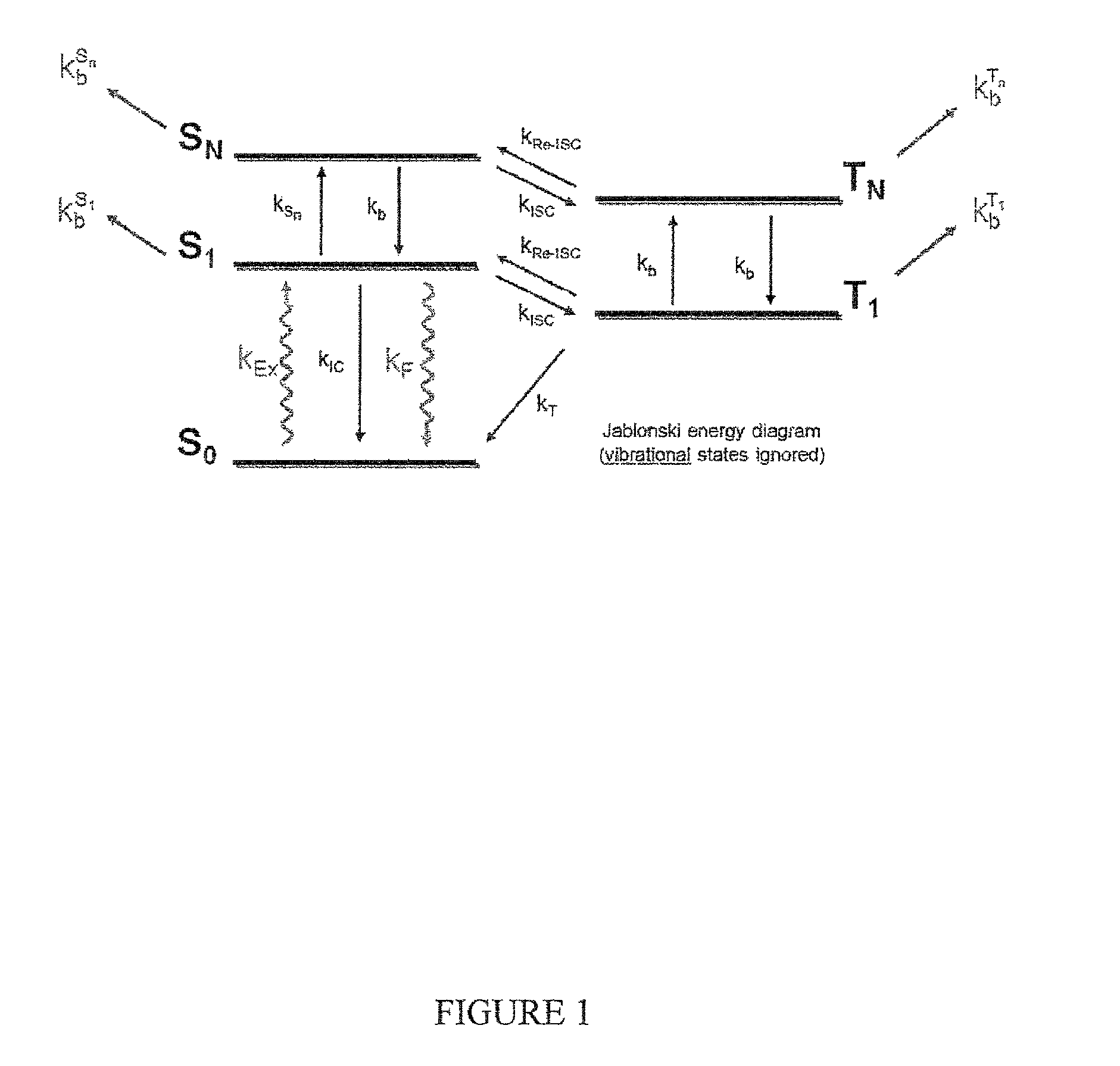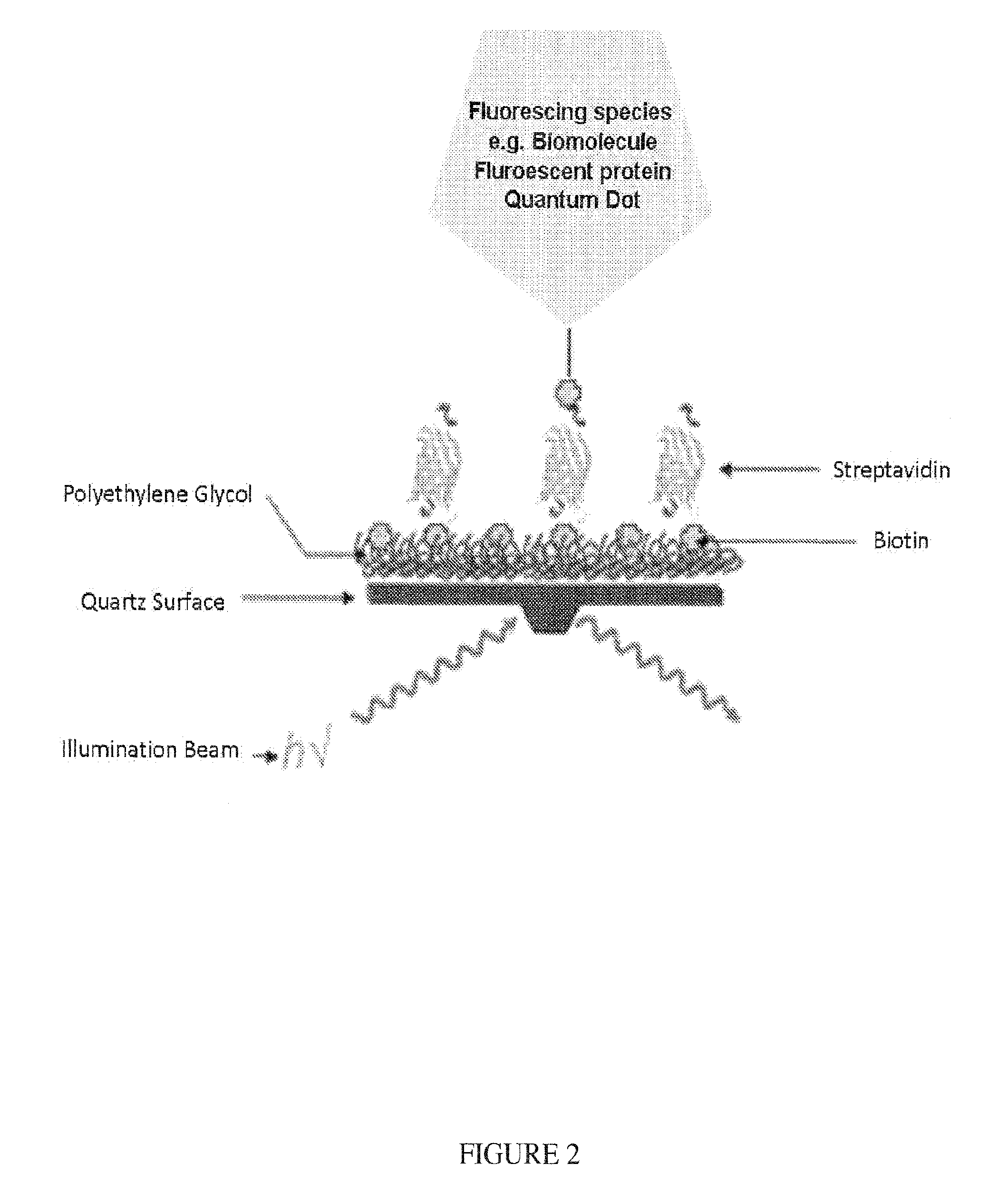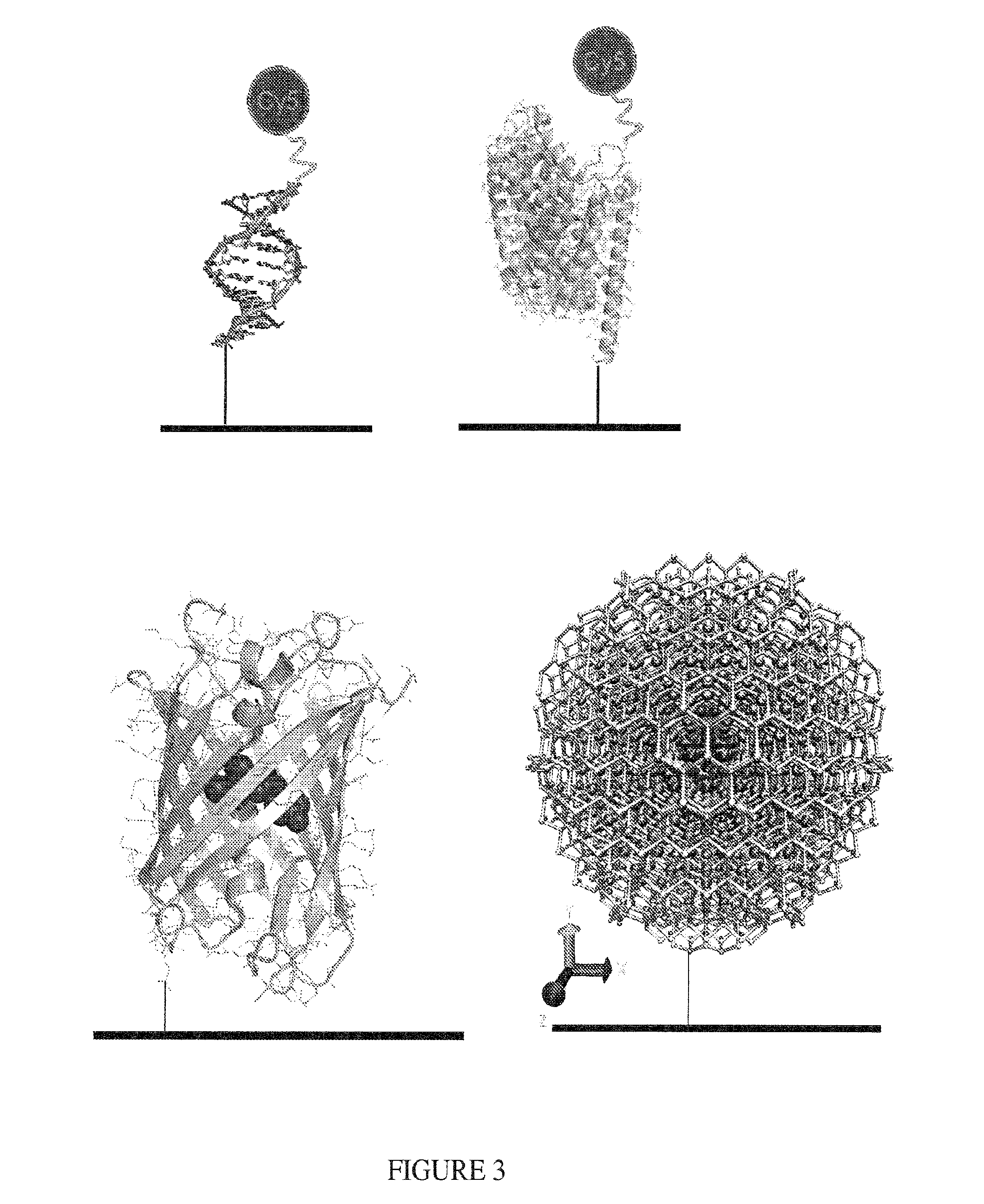Methods and compositions for altering photophysical properties of fluorophores via proximal quenching
a technology of fluorophores and compositions, applied in the field of compositions of fluorophores, can solve the problems of limited use of protective agents in solution as reported in the art, and achieve the effects of reducing the frequency of occurrence or lifetime of dark states, increasing relaxation rate, and modifying the effective time spent in dark states
- Summary
- Abstract
- Description
- Claims
- Application Information
AI Technical Summary
Benefits of technology
Problems solved by technology
Method used
Image
Examples
examples
Experimental Materials and Methods
Preparation of Dye-Labeled / Protective Agent Linked Oligonucleotides
[0167]Cy3, 5 or 5.5 Bis NHS-Ester was first reacted with an equimolar amount of amine modified protective agent in 50 mM potassium borate pH8 for 10 minutes at 37 degrees. After quenching with 2 fold excess of potassium hydroxide, monoreacted dye was purified from unreacted and di-reacted dyes using a semipreparative HPLC C18 column in 10 mM triethylammonium acetate in a gradient from 25-100% acetonitrile. After evaporation of acetonitrile, the product was concentrated and buffer exchanged over a sep-pak C18 column and eluted in methanol before final lyophilization. Reactive functional groups are regenerated as shown in FIG. 6.
[0168]Two complimentary 12 or 21-nucleotide DNAs were chemically synthesized with one strand possessing a 5′-C6-amino linker for dye linkage along with an additional 3′-biotin moiety attached via a 22 atom spacer (5′- / 5AmMC6 / GTC ATG GTC ATG / 3BioTEG / -3′ or 5′- / 5...
PUM
| Property | Measurement | Unit |
|---|---|---|
| emission wavelength | aaaaa | aaaaa |
| wavelengths | aaaaa | aaaaa |
| wavelengths | aaaaa | aaaaa |
Abstract
Description
Claims
Application Information
 Login to View More
Login to View More - R&D
- Intellectual Property
- Life Sciences
- Materials
- Tech Scout
- Unparalleled Data Quality
- Higher Quality Content
- 60% Fewer Hallucinations
Browse by: Latest US Patents, China's latest patents, Technical Efficacy Thesaurus, Application Domain, Technology Topic, Popular Technical Reports.
© 2025 PatSnap. All rights reserved.Legal|Privacy policy|Modern Slavery Act Transparency Statement|Sitemap|About US| Contact US: help@patsnap.com



